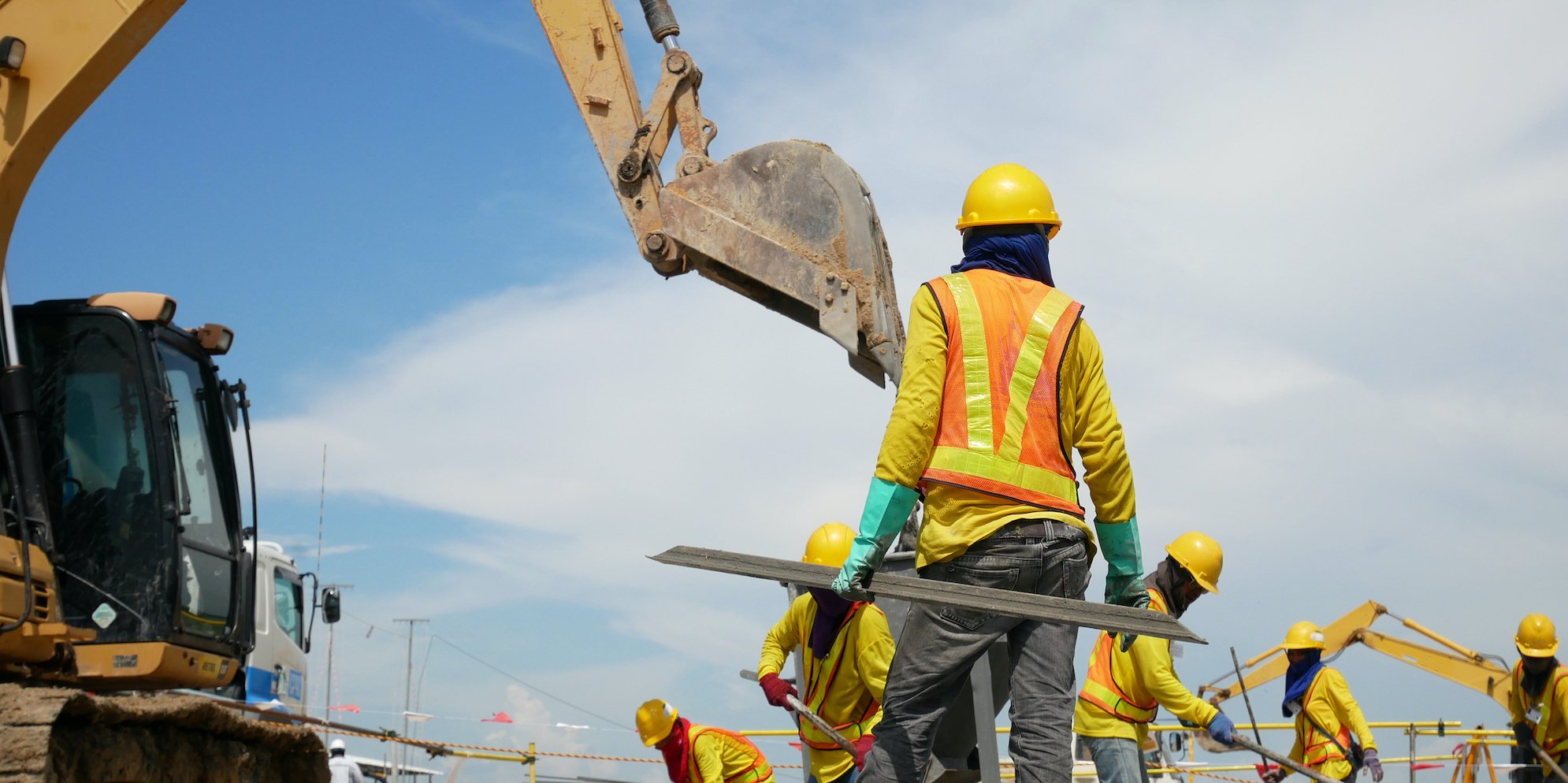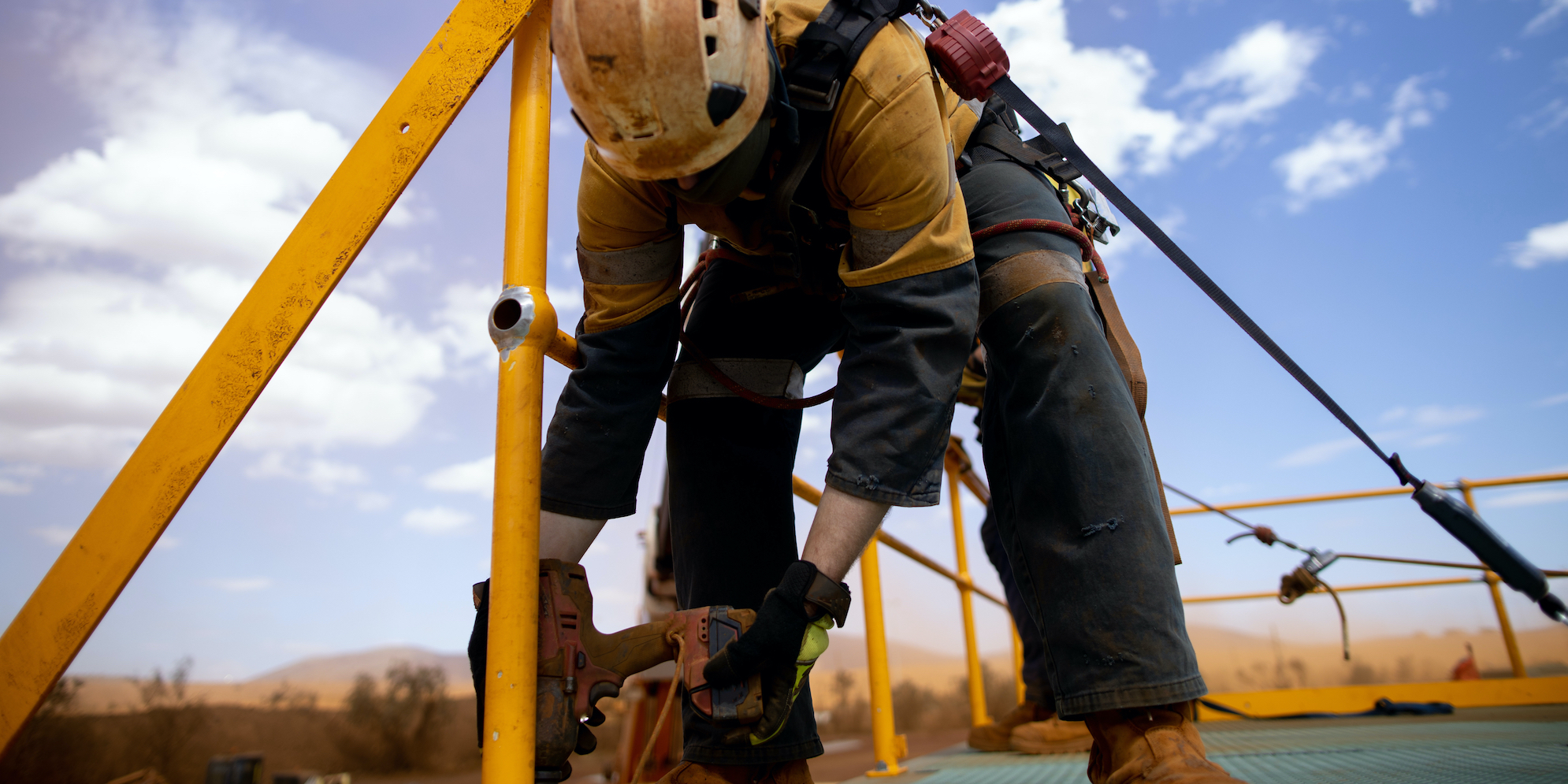Utility workers face hazards every day on the job — from heavy equipment, from electric and gas lines, from stormy weather, from heights and cave-ins.
According to the U.S. Bureau of Labor Statistics (BLS), utilities averaged 25.6 fatalities a year from 2016 to 2020. Injuries are even more common. The incidence rate for nonfatal injuries in utility system construction, for example, was 73.6 per 10,000 full-time workers in 2020 alone, according to the BLS.
Utility workers may encounter hazards, but that doesn’t mean injuries and fatalities can’t be prevented. Here, we review the top safety hazards in the utility industry and how to mitigate them.
Top 5 safety hazards for utility workers
1. Slips, trips, and falls
Slips, trips, and falls are the leading cause of workplace fatalities in construction, according to the Occupational Safety and Health Administration (OSHA). In 2020, the total incidence rate of slips, trips, and falls in utility construction was 21 per 100,000 full-time workers. In this category, falls on the same level were the most prevalent (9.7 incidence rate) followed by falls to a lower level (6.0 incidence rate).
OSHA offers several tips to help workers avoid slips, trips, and falls. They include planning ahead to get the job done safely, providing workers with the correct equipment—including personal protective equipment (PPE)—and training everyone appropriately.
Related: Preventing Fatal Falls in Construction
2. Struck-by objects or equipment
The struck-by object or equipment incidence rate was 11.9 per 100,000 full-time workers, according to the BLS, making them a leading cause of construction-related deaths. According to OSHA, roughly 75 percent of struck-by fatalities involve heavy equipment. Most struck-by job accidents are caused by vehicles, falling or flying objects, and risks from constructing masonry walls.
Every worksite should be evaluated to prevent specific hazards, but there are also several general measures that should always be taken. According to the Center for Construction Research and Training, these include the following:
- Work zones should be configured to properly warn workers and equipment operators.
- Flaggers, barricades, and signs should be used to guide construction.
- Signal personnel should use clear signals to communicate with operators.
- Barricades must be used to separate workers from vehicles, heavy equipment, and falling objects.
Look: 5 Highway Work Zone Safety Best Practices
3. Exposure to harmful substances or environments
A serious threat to utility workers, exposure to harmful substances or environments had a total incidence rate of 8.2 in 2020, according to the BLS. Utility workers could be exposed to electricity, radiation, noise, and temperature extremes, among other hazards, according to the National Safety Council (NSC).
OSHA recommends using a hierarchy of controls to eliminate or limit this safety risk. The best control is to find a safer alternative to the harmful substance or environment. If that cannot be done, the next best option is to implement engineering controls (i.e., changing a process to minimize contact with hazardous chemicals, isolating or enclosing the process, or using general dilution ventilation).
If that can’t be done, OSHA advises putting different administrative and work practice controls in place (for example, rotating job assignments and adjusting work schedules so workers are not overexposed to a hazardous chemical). As a last resort, PPE should be used to protect against these safety hazards. PPE might include chemical protective clothing, gloves, or eye protection.
4. Roadway incidents involving motorized land vehicles
Whether they’re riding in a vehicle or working alongside moving vehicles, utility workers are often in danger on roadways. With an incidence rate of 6.2 per 100,000 full-time workers, this safety hazard should be a central focus for all employers.
Some of the main causes of roadway crashes among workers include driver fatigue, inadequate maintenance, and driver distraction, according to the CDC. Reduce these safety hazards by taking measures like implementing a driver fatigue management program, ensuring work vehicles are serviced on a regular schedule, and equipping vehicles with hands-free devices to keep utility workers’ eyes on the road and hands on the wheel.
Unfortunately, workers in the construction industry are just as likely to be struck by a piece of construction equipment inside the work zone as by passing traffic, according to OSHA. To combat this, the CDC recommends several injury prevention measures, including ensuring the work zone is properly laid out, using flaggers, and outfitting workers in high-visibility apparel.
Check out: 5 Must-Cover Highway Work Zone Safety Training Topics
5. Exertion in lifting or lowering
Utility work commonly involves lifting or lowering heavy items, so it’s not surprising that the incidence rate involved with overexertion is 5.8 per 100,000 full-time workers. Although it is one of the most frequent hazards in the workplace, it’s easy to prevent with proper training.
According to OSHA, lifting a 25-pound box from the floor requires approximately 700 pounds of back muscle force—even with bended knees. Therefore, the importance of teaching workers proper lifting techniques cannot be emphasized enough.
Some proper lifting guidelines include trying out a load first (and getting help if it’s too heavy), configuring the work area so objects that need to be lifted are close to the body and at waist height, and keeping your back straight and lifting with your legs when picking up a load, according to OSHA.
Utility workers are at risk for safety hazards during every shift. Being aware of the biggest safety threats and taking steps to mitigate them can allow your team to avoid incidents that could cause serious or even fatal injuries.
Up next: What Is the Greatest Risk with Excavations?

